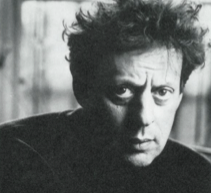How was the text for this symphony put together? James Morton, who is now part of the Interfaith Center in New York, and Kusumita Pedersen at the Department of Religion at St. Francis College, along with myself, became the text committee. We met for a year and divided the sources into three groups: Western, Eastern, and what they called Aboriginal or lndigenous sources. We drew from the Old Testament, the New Testament, the Qur’an, the various Buddhist, Hindu, and Chinese texts.

And the theme? The symphony was commissioned by the Salzburg Festival as a millennial concert. I thought of the millennium as the moment to look back and also to think of present and future. Requiem refers to dying, bardo refers to the in-between state—or, let’s say, the present, if you will. And I used nirmanakaya to mean roughly rebirth as enlightened activity. [Nirmanakaya is a Buddhist term which translates literally as “emanation body.” It is commonly used to depict the emobidoment of enlightenment, as in the physical form of the Buddha.]
What about handling the cultural baggage that comes with these traditions? There’s always some cultural baggage, and I don’t really mind that. Each historical tradition seems especially good at certain things. The Japanese are terrific with death and the Jews are good with suffering. For compassion, the New Testament was among the best sources. The words of Jesus compare remarkably well with some Tibetan teachings. I developed an appreciation for the New Testament, which I didn’t have before. And there were parts of the Mesoamerican Indian traditions that are virtually identical to Shamanistic traditions of Siberia. I read fairly widely but when you seta text to music, it becomes revealed in a very different way. I was surprised by how consonant these texts are with each other. When I finished, the text seemed to have been written by one person.
Do you mean one voice emerges, or one perception of reality? Both, of course. We spent a lot of time shaping and picking the texts. They weren’t just found in a package in the post office.
Picking and choosing from distinct teachings can seem a bit New Age. Of course, it’s different when used in spiritual practice as opposed to making art. Did the mix-and-match approach ever bother you? I think you make a good point. This is not a spiritual practice. It’s not even a religious work. I used teachings as a source of inspiration, but the work itself is not meant to be a teaching. We used these texts as inspirations to make an artwork, but this is not a practice, it’s a concert experience.
Rather than use the name that you gave this composition, why did the Salzburg Festival bill this as a “Peace Symphony”? I couldn’t stop them from calling it that. They even published essays about the Peace Symphony in the original program. But it has nothing to do with what I was doing. I believe that I’m in samsara and I don’t see any peace around, nor do I think that there is any possibility of it. So I don’t believe in world peace, and I don’t believe in the tooth fairy, either.
Thank you for subscribing to Tricycle! As a nonprofit, we depend on readers like you to keep Buddhist teachings and practices widely available.